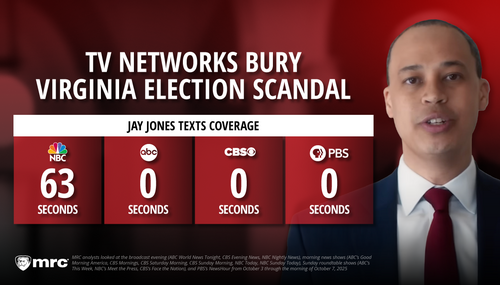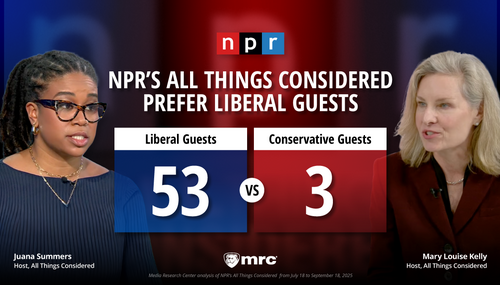During MSNBC’s 3 p.m. ET hour on Monday, anchor Kate Snow and Middle East correspondent Martin Fletcher apologized for using false maps depicting Israeli and Palestinian territory during a Thursday segment about escalating violence in the region. Snow began: “Last Thursday, in an attempt to talk about the context for the current turmoil in the Middle East we showed a series of maps of the changing geography in that region. We realized after we went off the air the maps were not factually accurate and we regret using them.”
Turning to Fletcher, Snow reiterated: “Clearly those maps – that set of maps was wrong. Tell us why.” Fletcher admitted: “Well, Kate, first of all, I wish I'd said it right away when I saw them. The bottom line is that the first map showed the area as if it was a Palestinian state....it was completely wrong. I mean, there was no Palestinian – there was no state called Palestine.”
Fletcher continued: “...at that time roughly in that area – and this is my estimate – there was about half a million Jews living there and about a million Arabs. So if anything, the map should have reflected that demographic reality. And it didn't. And it gave the wrong impression.”
Snow then attempted to portray the glaring error as simply the result of the complexity of the story: “And it points to a larger issue of how complex it is. You were saying to me off camera it's very complex to accurately cover the Middle East.”
Fletcher agreed: “Yeah. The passions are so high. It's such a tiny area. You know, you’ve got this one tiny piece of land which is basically the Jews and the Palestinians – the Jews and the Muslims both believe that God gave them the land.”
Here is a full transcript of the October 19 segment:
3:36 PM ET
KATE SNOW: Last Thursday, in an attempt to talk about the context for the current turmoil in the Middle East we showed a series of maps of the changing geography in that region. We realized after we went off the air the maps were not factually accurate and we regret using them.
To help clarify and provide perspective on the current situation we're joined again by long-time NBC Middle East correspondent Martin Fletcher. He's also author of Walking Israel: A personal Search for the Soul of A Nation. Martin, you've been covering the Middle East for 40 – a good 40 years now. Clearly those maps – that set of maps was wrong. Tell us why.
MARTIN FLETCHER: Well, Kate, first of all, I wish I'd said it right away when I saw them. The bottom line is that the first map showed the area as if it was a Palestinian state. The word across the map was “Palestine.” It was all, it looked as if it was all full of Arabs. And then the succeeding maps then showed fewer and fewer – less and less land all the time. The bottom line is it was completely wrong. I mean, there was no Palestinian – there was no state called Palestine. In 1946 it was a British mandate land. Britain was given control of the area by the League of Nations.
And as a matter of fact, at that time roughly in that area – and this is my estimate – there was about half a million Jews living there and about a million Arabs. So if anything, the map should have reflected that demographic reality. And it didn't. And it gave the wrong impression.
SNOW: And it points to a larger issue of how complex it is. You were saying to me off camera it's very complex to accurately cover the Middle East.
FLETCHER: Yeah. The passions are so high. It's such a tiny area. You know, you’ve got this one tiny piece of land which is basically the Jews and the Palestinians – the Jews and the Muslims both believe that God gave them the land. It's that one piece of land for two peoples. That's what the conflict has been all about for a very long time. Don't forget one thing. You’ve got so many people in a tiny area. I mean, Israel is smaller than New Jersey. The West Bank is smaller than Delaware.
SNOW: Right.
FLETCHER: You've got all of this stuff going on in a tiny area. So passions are very high. People are very close to each other. Friction all the time. Which sometimes spikes in the surge of violence that we're seeing today.
SNOW: And about the violence, John Kerry headed to the region, going to meet with leaders on both sides. How does the world stop the violence that's happening, the world community, how can we help stop this?
FLETCHER: That's been the question basically since the state was founded and the Arabs didn't agree with the founding of the state. One of the key triggers right now for the violence is the claim by the Palestinians that the Israelis are changing the status quo in their holy place, the Al-Aqsa mosque, they're allowing Jews to pray there, because the place is also the holiest place in Judaism, the Temple Mount. And there's a status quo agreement. And the Palestinians accuse Israel of changing that. And that's one of the triggers for the violence today. The Israelis say it's not true at all, they're not changing it at all. The opposite, they're protecting the area and enabling everyone to pray there safely.
But the bottom line now is that Kerry has to go there and his aim is going to be apparently to get the leaders of both sides, Israelis and Palestinians, to say publicly and clearly there is no change to the status quo. That may reduce the violence partly because of that. But it's going to be difficult because at the same time there's been calls by Hamas and by ISIS, the Islamic State, for suicide bombers. They're calling on the Palestinians to ratchet up the violence. So it's a tough situation.
SNOW: So diplomatically very difficult situation. Martin Fletcher, always appreciate you being here. Thanks so much.
FLETCHER: Thank you.




